Ivy (1947)
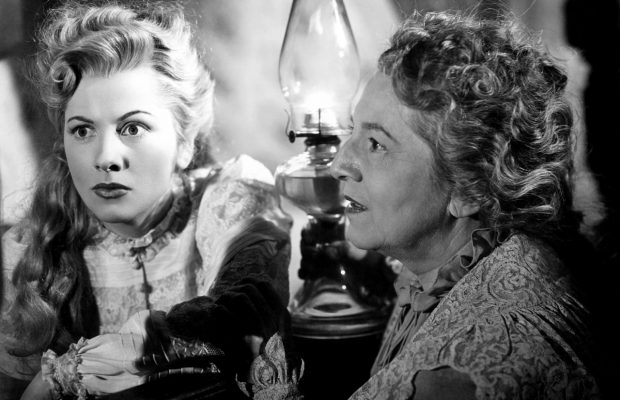
Toronto Film Society presented Ivy (1947) on Sunday, October 23, 1988 in a double bill with Double Door as part of the Season 41 Sunday Afternoon Film Buffs Series “B”, Programme 2.
Production Company: Interwood for Universal-International distribution. Producer: William Cameron Menzies. Director: Sam Wood. Screenplay: Charles Bennett from the novel “The Story of Ivy” by Marie Belloc Lowndes. Photograpy: Russell Metty. Music: Danièle Amfitheatrof. Editor: Ralph Dawson. Art Direction: Richard H. Riedel. Set Design: Russell A. Gausman, T.F. Offenbecker. Title Song: Hoagy Carmichael. Costumes: Travis Banton.
Cast: Joan Fontaine (Ivy), Patric Knowles (Dr. Roger Gretorex), Herbert Marshall (Miles Rushworth), Richard Ney (Jervis Lexton), Sir Cedric Hardwicke (Inspector Orpington), Lucile Watson (Mrs. Gretorex), Sara Allgood (Martha Huntley), Henry Stephenson (Judge), Rosalind Ivan (Emily), Lilian Fontaine (Lady Flora), Molly Lamont (Bella Crail), Una O’Connor (Mrs. Thrawn), Isobel Elsomm (Misa Chattle), Alan Napier (Sir Jonathan Wright), Paul Cavanagh (Dr. Herwick), Sir Charles Mendl (Sir Charles Gage), Gavin Muir (Sergeant).
In her autobiography, “No Bed of Roses,” Joan Fontaine claims that Ivy is most notable for the costumes by Travis Banton and Hoagy Carmichael’s song. She thus downplays, among other features of this neglected classic, the total design of the film engineered by the remarkable William Cameron Menzies, who took credit only for his role as the film’s producer. Even though uncredited, the Menzies skills, which are most unforgettably preserved in such films as Gone With the Wind, Our Town, and Kings Row, are apparent in the authentic atmospheric detail in every scene of Ivy. The turn-of-the-century charm of the film was clearly intentionally arrived at, since the action of the novel from which the film is adapted takes place in a more modern setting. Is evil more appropriate to the age of Sherlock Holmes and Jack the Ripper? It would appear that Hollywood thinks so–or at least thought so in 1947.
Fontaine also dismisses too lightly her own intense performance as a woman obsessed with wealth, who, on meeting a man who can provide her with all the possessions her heart desires, logically and methodically decides to poison her husband and frame her lover, thus conveniently disposing of the two obstacles in the way of an advantageous remarriage. Fontaine’s performance is so heartlessly powerful that one reviewer suggested that she was earning herself the title of “the woman you love to hate”, in memory of that other arch-villain, Erich von Stroheim. But no other black-hearted monster has ever been veiled behind as sweet and delicate a veneer as Fontaine’s. It is as if the timorous wife of Rebecca and Suspicion had been concealing all the time a rich vein of evil. (This bitchy side of Joan Fontaine would again be exploited in films like Born to be Bad and Tender is the Night.) The ads for to-day’s film screamed, to the ticket-buyers’ delight, “They call her Poison Ivy…”
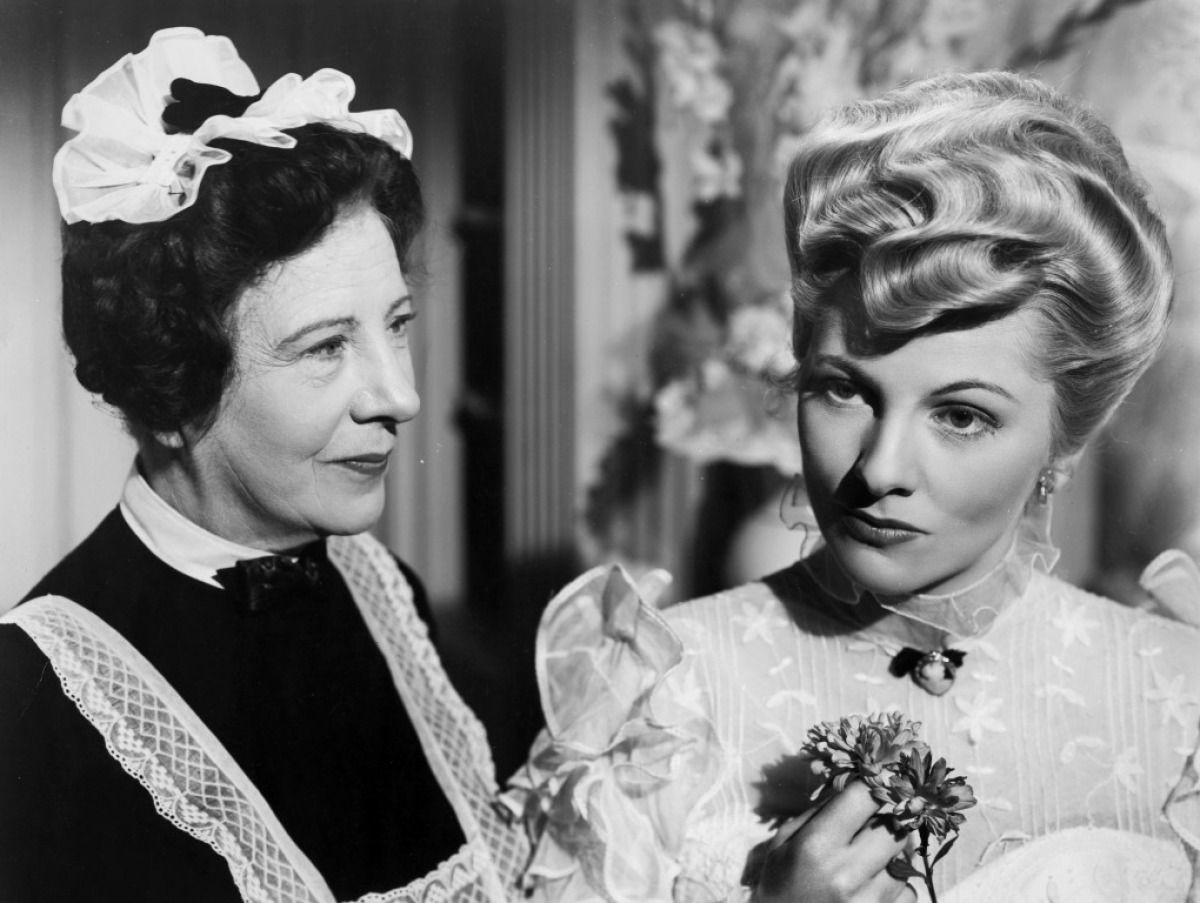
Within days of the New York release of Ivy, director Sam Wood became a man whom a great part of the Hollywood community truly began to hate. For it was then that he named the specific names which would allow the Communist witchhunts of the House Unamerican Activities Committee to gain momentum. Wood’s career had been long and significant. He had directed about 80 films since 1919, including 10 silent features with Gloria Swanson, two of the best Marx Brothers comedies, and 4 of the strongest Gary Cooper films of the 1940s, as well as classic adaptations of literary works like Goodbye Mr. Chips, Our Town, Kitty Foyle and Kings Row. He had completed the direction of Gone With the Wind after Victor Fleming took ill. Ivy was produced by his own independent production company. But no amount of artistic achievement could compensate for the betrayal which much of Hollywood saw in his declarations. Largely unloved, he died two years later on the completion of his final fine films, Command Decision and The Stratton Story.
Wood had a knack for assembling large casts of excellent supporting players. For Ivy, it was necessary that the characters be–or seem to be–British. Herbert Marshall, as the object of Fontaine’s desires, was, of course, the real thing. His British manners had already graced films like Trouble in Paradise, The Letter, and The Razor’s Edge. Patric Knowles, who plays Fontaine’s lover, had left England for Hollywood in 1936. His appearance as Will Scarlett in The Adventures of Robin Hood had contributed much to the fun–and pseudo-British flair–of that 1938 classic. But Richard Ney, Fontaine’s husband in Ivy, was pure American. Perhaps his marriage to Greer Garson (actually dissolving in 1947) had helped him to absorb some British traits. Garson and Ney had met while he was playing her son in Mrs. Miniver in 1942. Ney subsequently became a top-ranking businessman who has written several bestsellers on the world of investments.
The women in character roles are an extremely distinguished lot. Sara Allgood had been Oscar-nominated for her supporting role in How Green Was My Valley (1941), as had Lucile Watson for Watch on the Rhine (1943). Rosalind Ivan was so good at playing shrewish wives (married to Charles Laughton in The Suspect and to Edward G. Robinson in Scarlet Street, for instance) that she had earned for herself the title “Ivan the Terrible” in certain circles. But the most interesting character actress of all is Lilian Fontaine, who plays Lady Flora Crail. In real life, Joan Fontaine’s mother, she had begun her film career two years earlier playing Jane Wyman’s mother in The Lost Weekend. She later appeared in one other Joan Fontaine film, as Ida Lupino’s landlady in The Bigamist. But she was never at, strangely enough, in any film starring her other famous daughter, Olivia de Havilland.
Notes by Cam Tolton

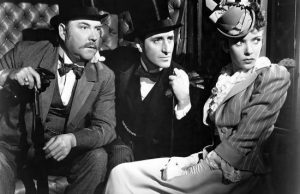
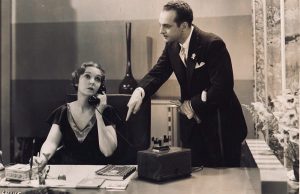
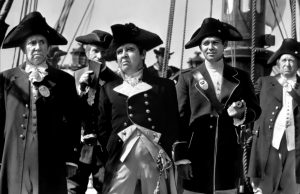






Leave a Reply